101km Alfredena to Casoli
The Apennines
Along the Sangro
Ride Overview
Standing on the ridge above the Sangro River, some kilometre or more below, Southern Italy is laid out below you. Ridge after ridge melts into the winter haze. On the other side, the mountain-fortress of the snow-capped Maiella massif . The day is a spectacular journey at any time of year, but in winter it has a cleaness and a starker beauty. The whole day is ridden along the Gustav Line and there are poignant and reflective moments to make you pause throughout. Large birds of prey skim the bushes, wild boar are frequent visitors, as are deer and wolves - not that you’re going to see the latter, but they are around leaving their hair-filled scat on the road. Other than Castel di Sangro and Casoli, you’ll be hard pushed to see anyone all day, and if you share the road with more than a dozen cars, you will have been most unfortunate.


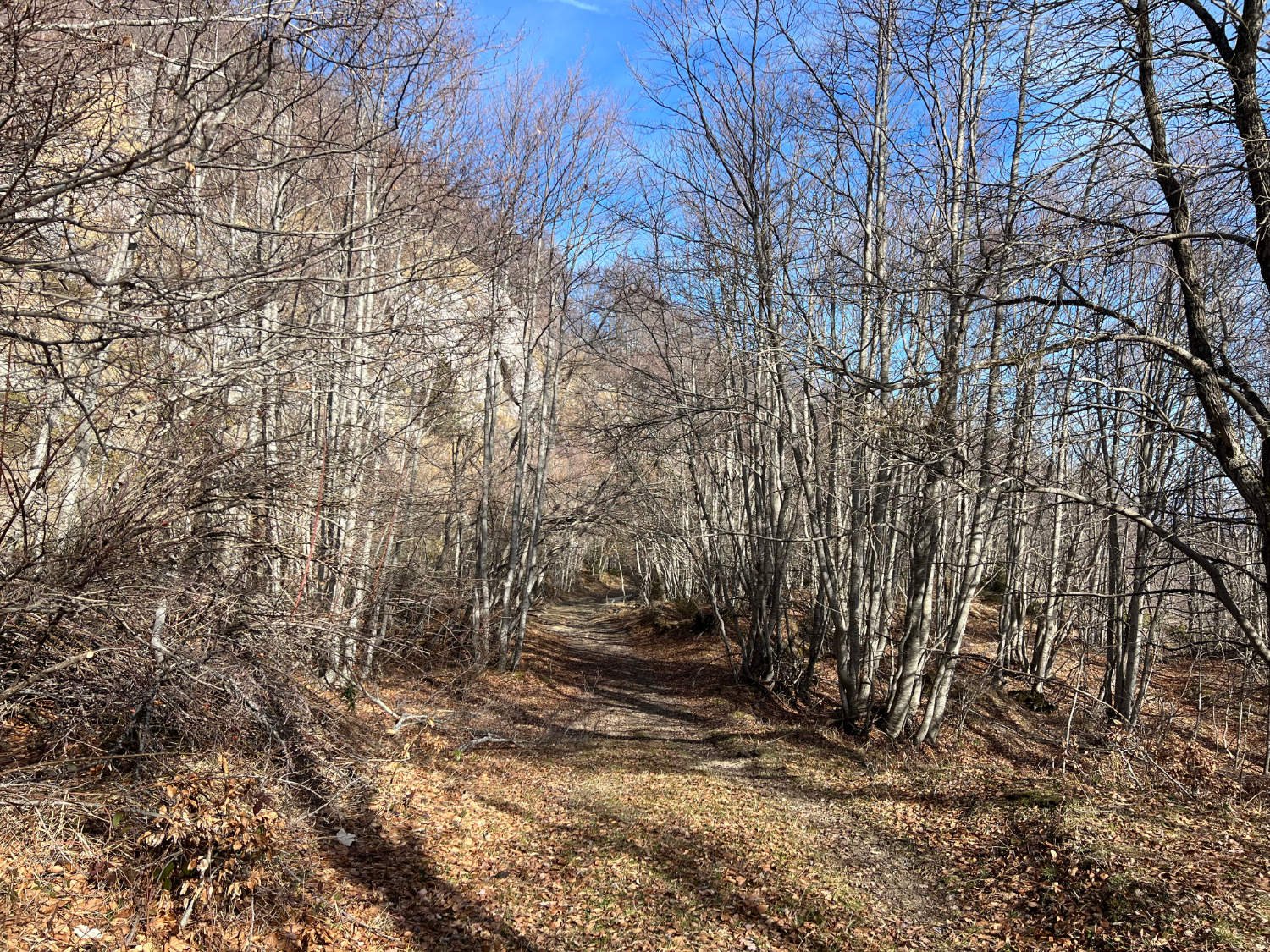
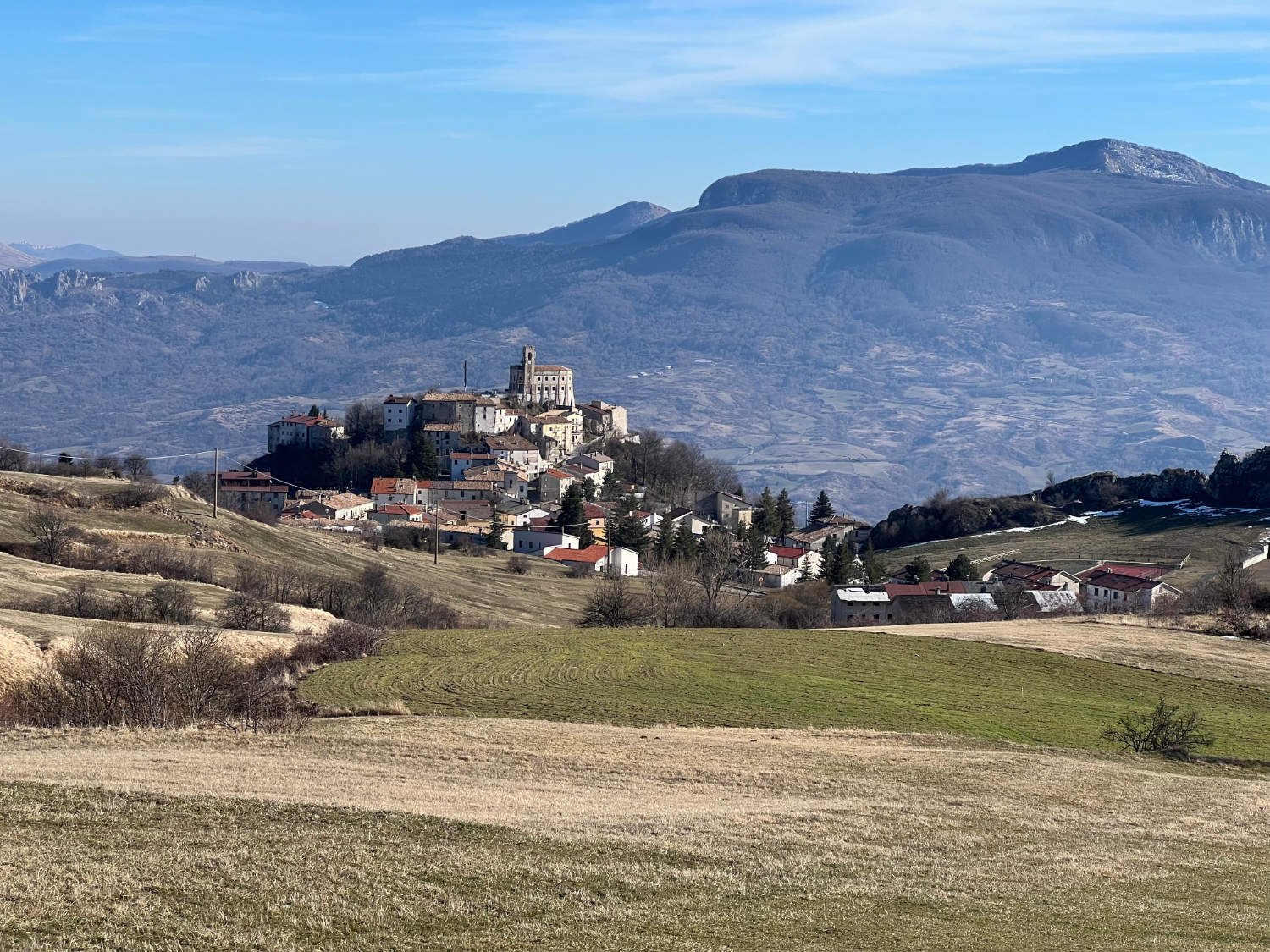


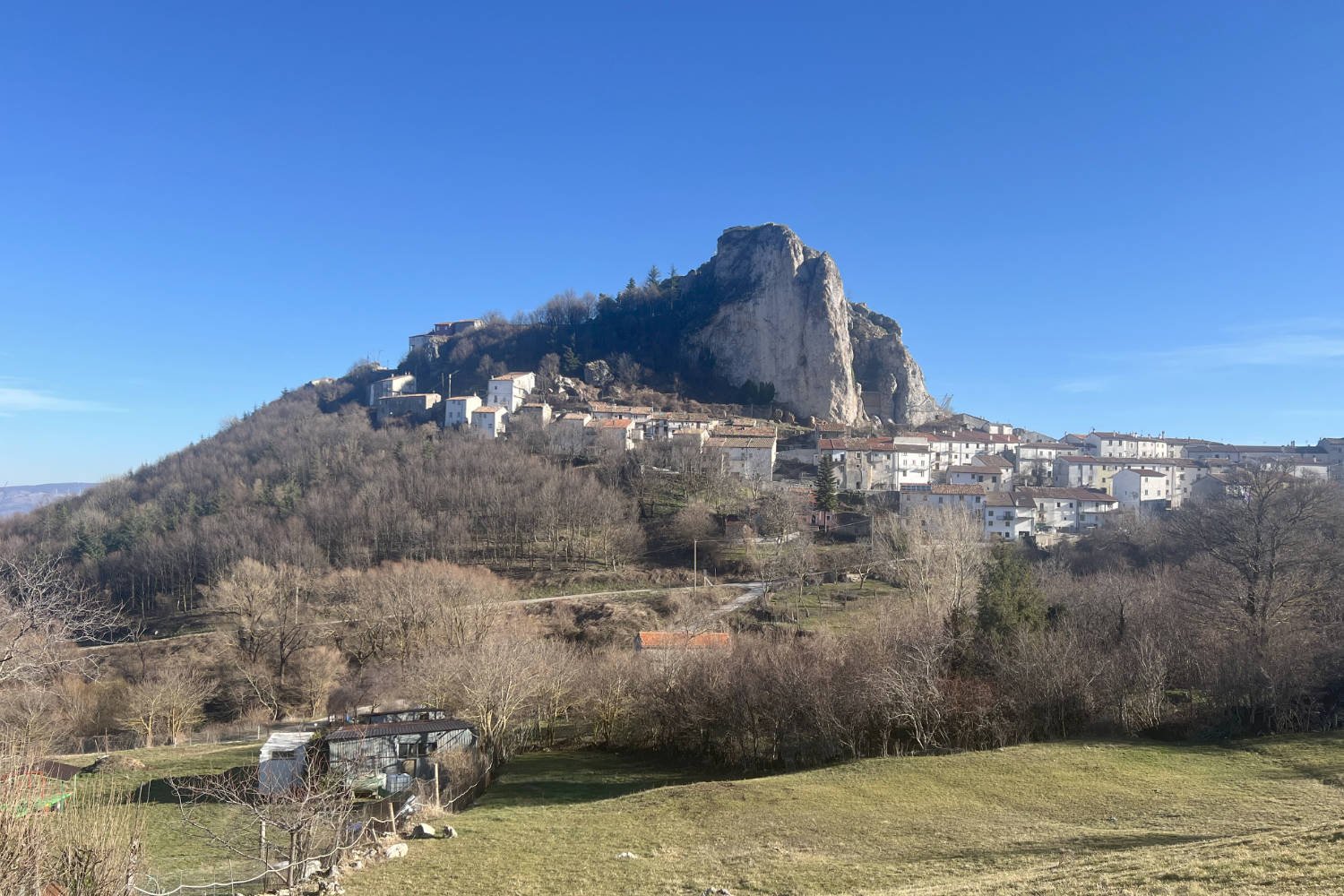
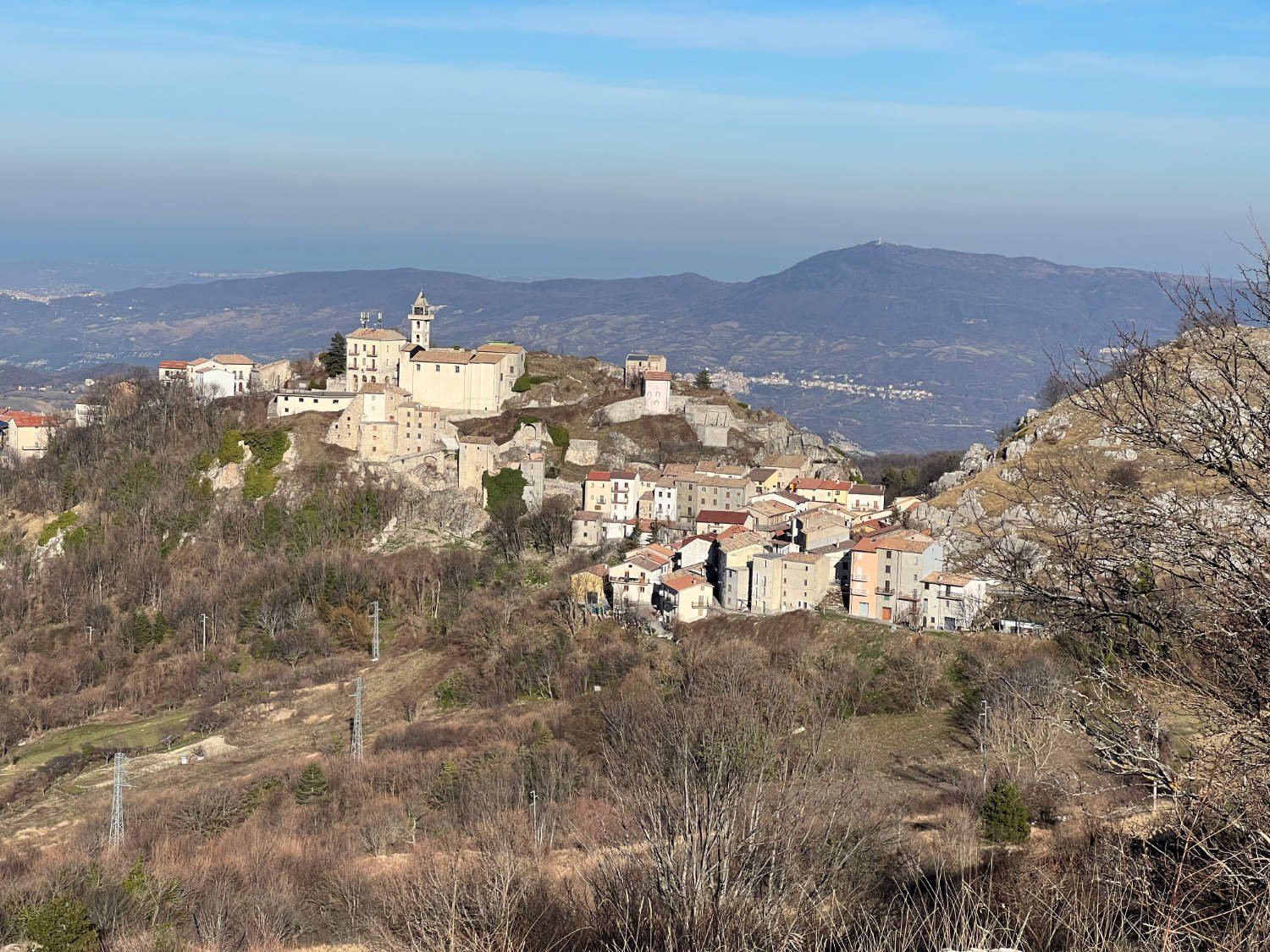

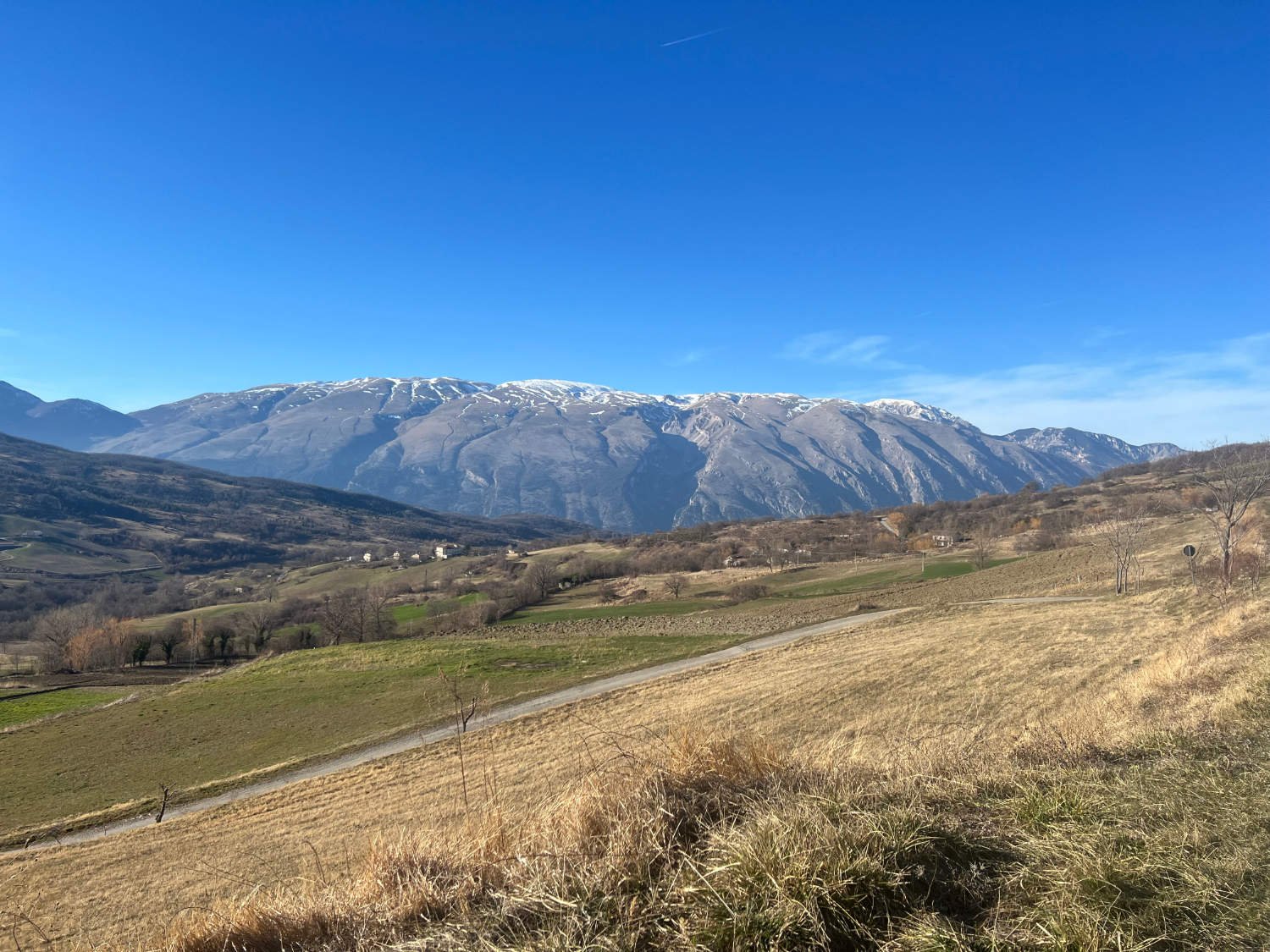




Ride practicalities
START/FINISH: Alfredena DISTANCE: 101km TOTAL ASCENT: 1650m TERRAIN AND SURFACES: Tarmac’d surfaces throughout, although some might count as more gravel than road FOOD:Pizzoferrato; Dolci Mani (Closed Wednesdays). There are café bars in many villages but few sell food. Most, if not all restaurants are closed in winter. Stock up when you can ACCOMODATION: Scattered - try the usual apps for self-catering apartments - hotels are all but non-existent in winter. If there’s time and energy, riding onto the coast will offer more choice. MAINLINE TRAIN SERVICES: None LINKS TO OTHER RIDES:
Ride notes
The first few kilometres on a superb cycle path beside the Sangro river, give the feeling that the hard mountains are behind you. The path gently wends downhill towards Castel di Sangro. The valley is wide, the grass is winter brown, reeds rasp in the breeze. THe imperious grey wall of mountain rises vertiginously towards the rich dark blue sky of a winter sky.
pista ciclabile
Castel di Sangro being the important crossroads that it is, - received more than it’s fair share of war time damage. The resulting rebuild has not been kind on the eye, and there’s little here to delay your onward journey. You ride near to the football stadium which holds more people than there are in the town. The club which was founded in 1953, battled in regional amateur leagues before reaching the professional ranks of Serie C2 in 1989. At the end of the season of 1994/5 they found themselves in a play-off to reach Serie B, just a division away from playing in the top league with the likes of Inter Milan and Juventus. The game was heading for a penalty shoot out when the manager sent on as a substitute his number two goalie, who’d not played a single match all season. He saved the crucial penalty and Castel di Sangro were promoted to Serie B, where they stayed for another season. What happened next is not such a miracle. Poor management, tragic deaths, the mindless selling of players, accusations of match fixing and drug dealing all led to a collapse as rapid as the rise. In 2005, the club was wound up. Another club continues with a different name and struggles in the lower leagues.
The route continues down the Sangro valley. The river marked the ‘front line’ between the Germans and the Allies. Thousands of POWs, upon their release from Italian camps on 8th September 1943, (a condition of the Italian surrender) made their way towards the river in the hope of crossing back into friendly territory. The Germans who had full control of the countryside north of the river, exacted terrible retribution on any family who were thought to harbour or aid an Allied soldier. Yet despite this, countless thousands assisted the Allies by hiding them in barns, giving food or helping in any way they could.
The road is a delight to ride on; sinuous and quiet, passing through fields and groves of olives.
At Sant’Angelo del Pesco, you turn onto the steep slopes and climb back into the mountains. And what a climb it is. Through woods and fields and hamlets. The road is narrow and sometimes steep, but as you gain height the misty views of winter peaks removes any discomfort. Gamberale is the first village you come to on reaching the top, where the only sound is water dropping from a pipe into a stone trough.
The road to Pizzaferrato
The road connecting Gamberale with Pizzoferrato runs just below a ridge with views over what seem to be half of Italy. Misty blue hills and mountains roll down the peninsula. The sea is seen in the hazy distance. Rock, the colour of a seagull gleams in the sun.
In Pizzaferato you enter Wigram country. Lionel Wigram was a British Army maverick; extraordinarily brave and tough. At the start of the war, he’d been disillusioned by the training feeling that men were being prepared in warfare and tactics little changed from Battle of Waterloo. he petitioned the top brass to be allowed to set up Battle School in Barnard Castle, which later became a model for the Marines, the Paras, the SAS. Live bullets were used in training, men were disorientated, marched to exhaustion and then trained to fight in the open. Fighting in Italy, Wigram under the command of General Montgomery, Wigram, a commanding officer wrote a report about a slow and botched attack on a German position. General Montgomery took exception to the criticism and demoted Wigram. Mooching around Casoli (where today’s ride ends), he fell into a state of despair. During the routine patrols, he formed a deep bond with the local Abruzzese, who were being brutalised by the occupying Germans; women were raped, men shot, livestock stolen without compensation. Farms and homes were burnt. Wigram turned a disparate group of peasants seeking revenge into a private army using Battle School techniques. The band of Partisans became known as ‘Wigforce’ and under Wigram’s leadership the German’s were harried throughout the land you are about to ride through. On the night of the 3/4 February 1944, Wigram led an attack on the German position at Pizzoferrato where he and sixteen men, both Italian and British, were killed. In the following months Ettore Troilo, became the legendary leader of the group who became known as the Maiella Brigade. They went on to become the only Partisan group to win the Gold Medal of Military Valour.
Pizzoferrato
If you’ve time, it’s worth riding across the village square and up the short but steep hill to the chapel at the top of the rock which juts like a cork wedged into a wine bottle. The views are mesmerising. It was on the green immediately below the chapel, that Wigram, whilst covering a German soldier who had surrendered, was shot by another of the enemy. Five British soldiers including Wigram lost their lives in the fight along with ten Partisans. The names of the Partisans are proudly displayed on a plaque outside the town hall. There is no mention of Wigram and the other British soldiers.
Mt Pizzi
The ride down from Pizzoferrato is exhilarating. There are corners full of gravel, long straights of good tarmac. You ride past rough fields scratched into the soil and wild scrub and you are perpetually distracted by the view of the great hulk of the Maiella, which stands impregnable and impassive in front of you, clothed in its grey and white winter suit. It’s a beast of a mountain - low slung, without jagged peaks peaks, but totally mesmerising. It has had a mystical effect on the peoples who’ve lived around it for millennia, and it is still today, regarded as one of Europe’s most sacred mountains. Beyond the village are the archeological remains of another occupier, the Roman town of Juvanum. As well as pillars strewn around the place, there’s well preserved theatre against a backdrop of the Maiella. It is a lovely place to sit and rest awhile.
Gessopalena - the old town destroyed by war.
From here to Casoli, the next forty-five kilometres are almost all downhill. It is grin-inducing riding, the road wide and curvaceous. Views are everywhere. After Gessopelana. Gesso is the local name for gypsum and the old town which you see in ruins on a spur, can glint like a beacon in the low light. It’s worth the short deviation to wander around the ruins. Ruined because the Germans blew up every single house. At the end of the path through the ghost town is a haunting memorial to those who died at the hands of the Fascists.
Sant'Agata
The route leaves the ridge and dives down into the Aventino valley, passing on the way, a farmhouse in the hamlet of Sant’Agata. Here, forty men and women were herded into a house in the winter of 1944. The house was set alight. Anyone who attempted an escape from the flames was shot. It was one of the most barbarous acts in the horrors of the Italian war. The remains of the arm stand roofless amidst scrub, guarded by an impassive mountain. The rough country road continues, through abandoned country. You may hear the wild boar rustling in the woods. If you do, or even see a herd, slow or stop and shout loudly. They’ll storm away from you fast.
The day ends after a short up-hill gravel track, at Casoli, the self-styled ‘city of oil’. The town is a picturesque labyrinth of stairways and winding streets which finish at the impressive and restored castle at the top. All that remains is to find quarters for the night and dinner.







